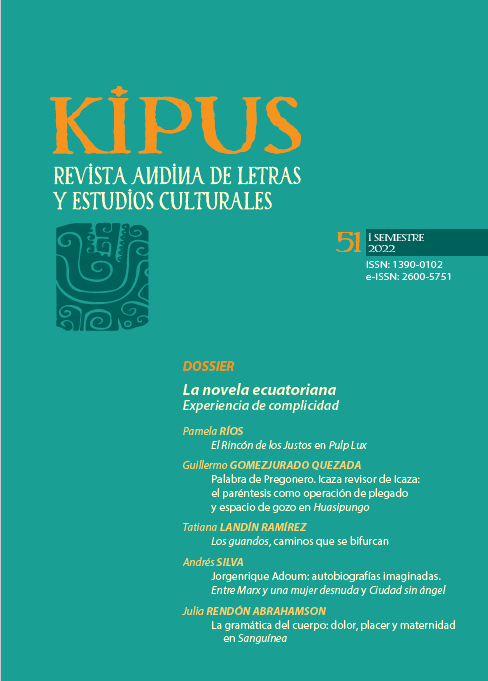The Grammar of the Body: Pain, Pleasure and Motherhood in Sanguínea
DOI:
https://doi.org/10.32719/13900102.2022.51.7Keywords:
novel, motherhood, body, fluids, menstruation, writting, sexuality, womanAbstract
In the novel Sanguínea (2020), Gabriela Ponce, achieves “writing with the body”. She does it through the admission of fluids, especially menstrual blood, as a way to refine meaning and writing. The sexual and erotic also play an important role in finding a particular language that creates a grammar of the body. Motherhood is another element that allows us to think of corporeality as a form of language and at the same time as a configuration of space. The body is a space in itself in this novel, where the narration starts from a flow of consciousness of the protagonist.
Downloads
References
Farrokhzad, Athena. 2021. Blanco de blanco. Barcelona: Kriller71 Ediciones.
Pizarnik, Alejandra. 2016. Poesía completa: 1955-1972. Editado por Ana Becciu. Segunda edición en este formato. Poesía 210. Barcelona: Lumen.
Ponce, Gabriela. 2020. Sanguínea. Quito: Severo.
Rivera Garza, Cristina. 2017. Había mucha neblina o humo o no sé qué. Barcelona: Literatura Random House.
Valenzuela, Luisa. 2018. “Escribir con el cuerpo”. Biblioteca Virtual Miguel de Cervantes. http://www.cervantesvirtual.com/nd/ark:/59851/bmc0933371.
Vuong, Ocean. 2019. On Earth We’re Briefly Gorgeous. Nueva York: Penguin Press.
Downloads
Published
How to Cite
Issue
Section
License

This work is licensed under a Creative Commons Attribution-NonCommercial-ShareAlike 4.0 International License.







.png)
